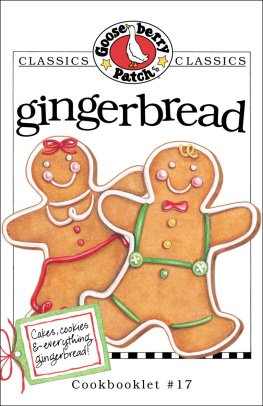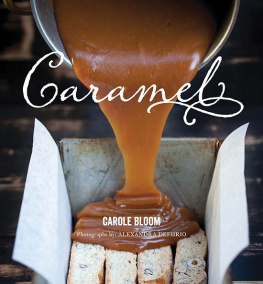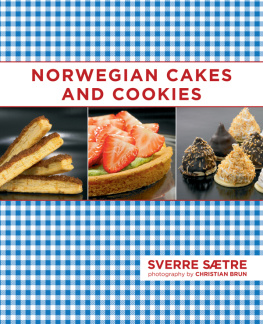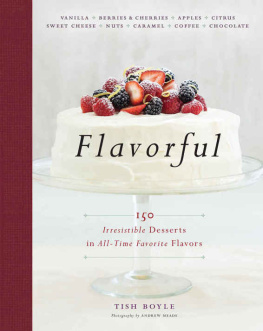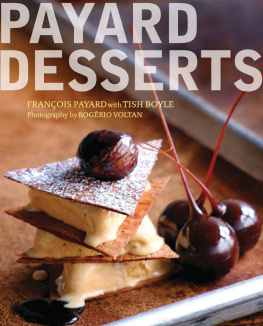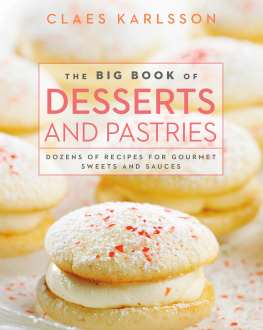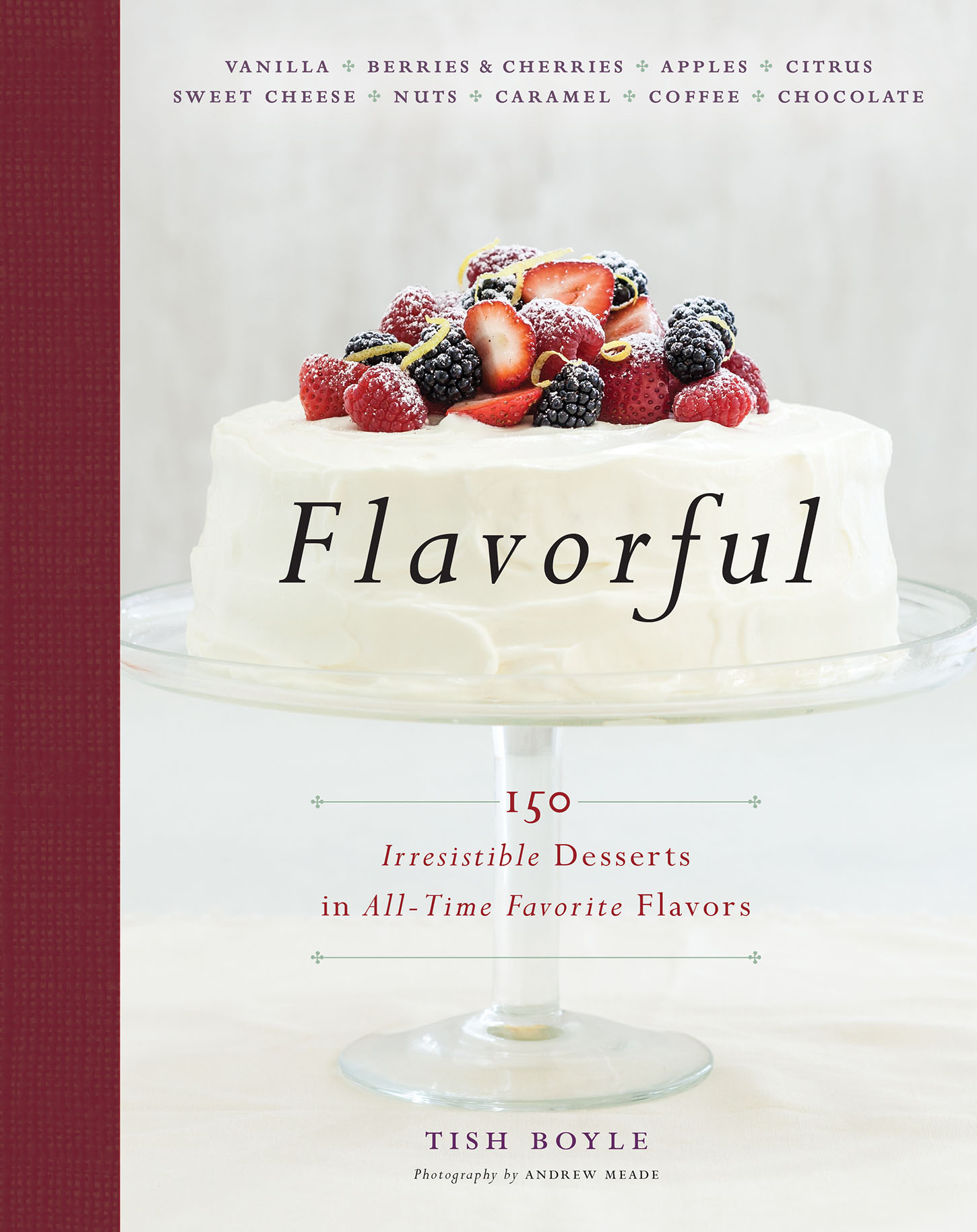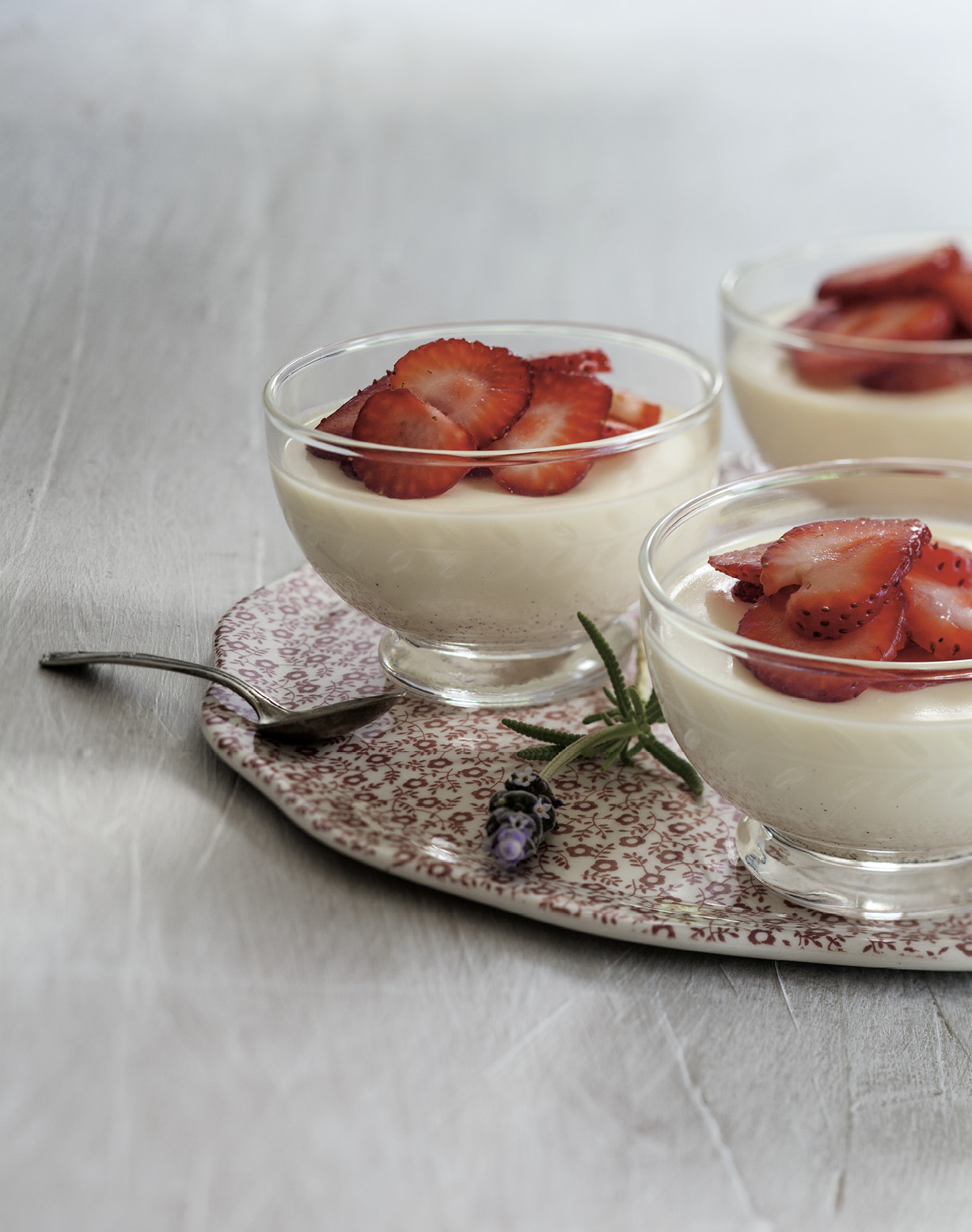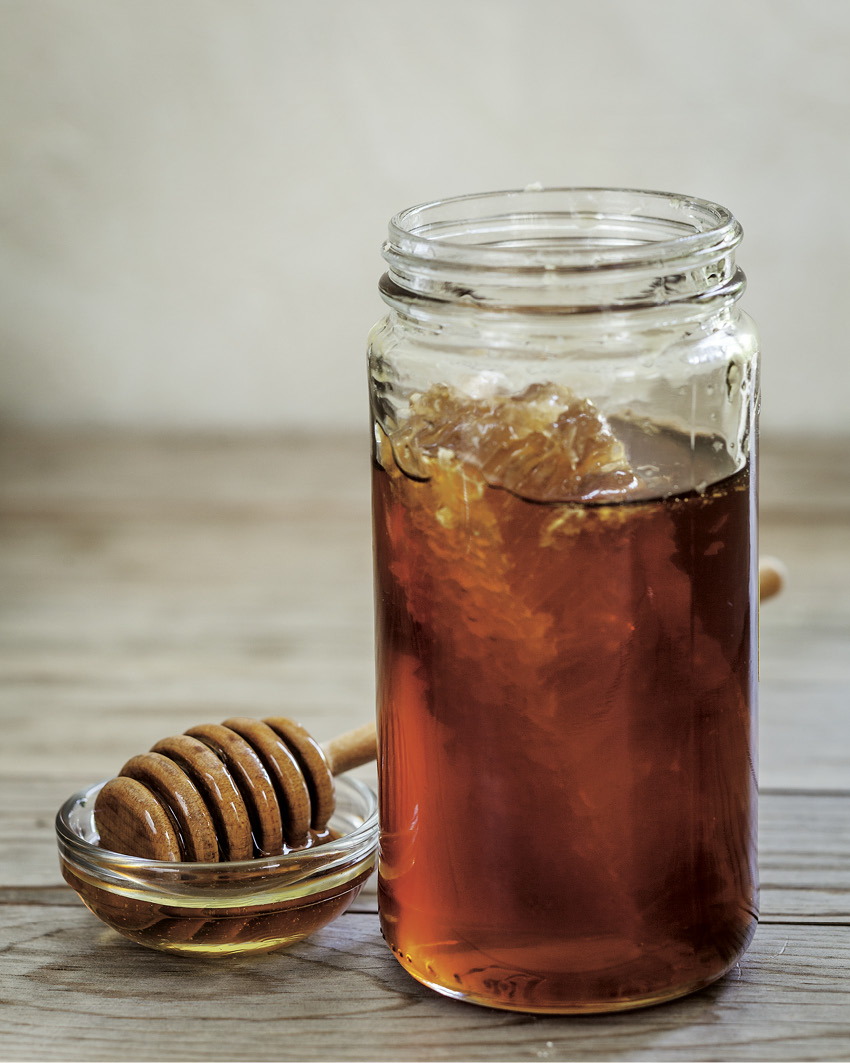Copyright 2015 by Tish Boyle
Interior photography 2015 by Andrew Meade
Food styling by Claire Perez
All rights reserved.
For information about permission to reproduce selections from this book, write to Permissions, Houghton Mifflin Harcourt Publishing Company, 215 Park Avenue South, New York, New York 10003.
www.hmhco.com
Library of Congress Cataloging-in-Publication Data
Boyle, Tish.
Flavorful : 150 irresistible desserts in all-time favorite flavors / Tish Boyle; photography by Andrew Meade.
pages cm
Includes bibliographical references.
ISBN 978-1-118-52355-1 (hardcover)
ISBN 978-0-544-18640-8 (ebook)
1. Desserts. I. Title.
TX773.B6928 2015
641.86 dc23 2015004678
v1.0915
To Mickey.
Introduction
Theres no accounting for taste, as the saying goes, and this is certainly true when it comes to desserts. Consider three people dining together at a restaurant. What makes one person order the lemon souffl, another the flourless chocolate cake, and the third the espresso-soaked tiramisu? Why do some people love the puckery tartness of a lemon meringue pie, while others swoon over a rich chocolate layer cake or a caramel mousse? If theres a chocolate item on a dessert menu, for example, thats the one Ill order every time. Everyones palate is a little different.
Ive always been curious about flavor. In my years as editor of Chocolatier and Pastry Art & Design magazines, I frequently asked pastry chefs how they planned their dessert menus. Many cited seasonality as an important factor in selecting items for their menus desserts with apples or pears for the fall; citrus for winter; strawberry and rhubarb for the spring; and stone fruits and berries in the summer. Working with the seasons makes perfect sense, because a big part of a pastry chefs job is getting ahold of the very best raw ingredients throughout the year. After all, if you start with oversized, flavorless strawberries, your strawberry shortcake will never be any good, regardless of how pretty it looks on the plate.
But even more critical than working with the seasons is the pastry chefs underlying goal of selling as many desserts as possible. As one chef put it, You can make the best prune tart in the world, but if people dont like prunes, its just not going to sell. A good pastry chef knows what flavors sell, and his or her menu will focus on these flavors. These are the desserts that people will order time after time, regardless of the season or, for that matter, anything else.
Many factors come into play when we taste a dessert. Our tongues can identify four tastes: sweet, salty, sour, and bitter. Simply put, it is how we react to the combination of these four tastes that dictates our flavor preferences. My personal research, based on interviewing countless pastry chefs, led me to a list of the nine hottest flavors in the dessert world: vanilla, chocolate, caramel, coffee, nuts, apple, berries and cherries, sweet cheese (as in cheesecake), and citrus fruit. My objective in this book is to present a collection of exceptional desserts in these Americas favorite flavors. No matter which is your favorite, there is something for everyone here, from caramel devotees to chocolate fanatics to cheesecake aficionados to coffee junkies to lemon lovers. Capturing flavor is the first, and probably most important, step in creating a great dessert. Adding textural contrasts and presenting that dessert in a visually appealing way also contribute to its success. Each recipe in this book has been developed with the goal of maximizing flavor and visual appeal an excellent foundation for developing a repertoire of memorable desserts that you can depend on and return to time after time.
Recipe Notes
With just a few exceptions, the recipes in this book dont require special pans or molds, unusual equipment, or extravagant ingredients. They were all tested in my home oven, which is electric. Recipes indicate a range of time for baking always check 5 minutes before the earliest time given in the baking range, just to be on the safe side. Ovens do vary considerably, so always use an oven thermometer to make sure you are baking at the correct temperature. Unless specified in the recipe, your oven rack should be positioned in the center of the oven. If you are baking two sheets at one time, arrange the oven racks close to the center of the oven, rather than at the top and bottom, and switch positions of the baking sheets halfway through baking.
Essential Baking Equipment
Following is a list for the well-equipped pastry kitchen. The tools that I deem essential have an asterisk next to them.
- Apple corer
- Bench scraper
- Cake turntable
- Cardboard cake rounds
- Cherry pitter
- * Citrus juicer
- * Citrus zester
- * Digital scale
- Electric juicer
- * Electric mixer
- Food processor
- * Knives
- * Measuring equipment (1-cup and 1-quart glass liquid measuring cups, nested metal dry measuring cups, and metal measuring spoons)
- Microplane zester/grater
- * Mixing bowls
- Parchment paper
- * Pastry bags
- Pastry brushes
- * Pastry cutters
- * Pastry tips
- Pastry wheel
- Propane or butane torch
- * Rolling pin
- Saucepans
- * Sieve
- Sifter
- Silicone baking mats
- * Spatulas
- * Thermometers (candy, instant-read, and oven)
- * Vegetable peeler
- * Whisks
- * Wire racks
- * Wooden spoons
Ingredient Notes
Using the best quality ingredients possible is an important first step in making a great cake, pie, pudding, or other dessert. Following are notes on some of the basic ingredients used in the book, with some suggestions on brands.
Flours
All-purpose, cake, and whole wheat flour. When baking, its important to use the type of flour called for in each recipe, whether its all-purpose, cake, or whole wheat flour. Using the wrong flour can have a dramatic impact on your dessert or baked good, and not in a good way. Use a high-quality brand and measure accurately, preferably by weight. Invest in a good digital scale and get into the habit of using it to weigh your ingredients, especially flour. If you must use volume measurements, measure carefully. Stir the flour with a whisk to aerate it first, then spoon it into the dry measuring cup, overfilling it. Use the back of a butter knife to sweep away the excess flour and level the top.
For all-purpose flour, I use King Arthur unbleached flour. For





